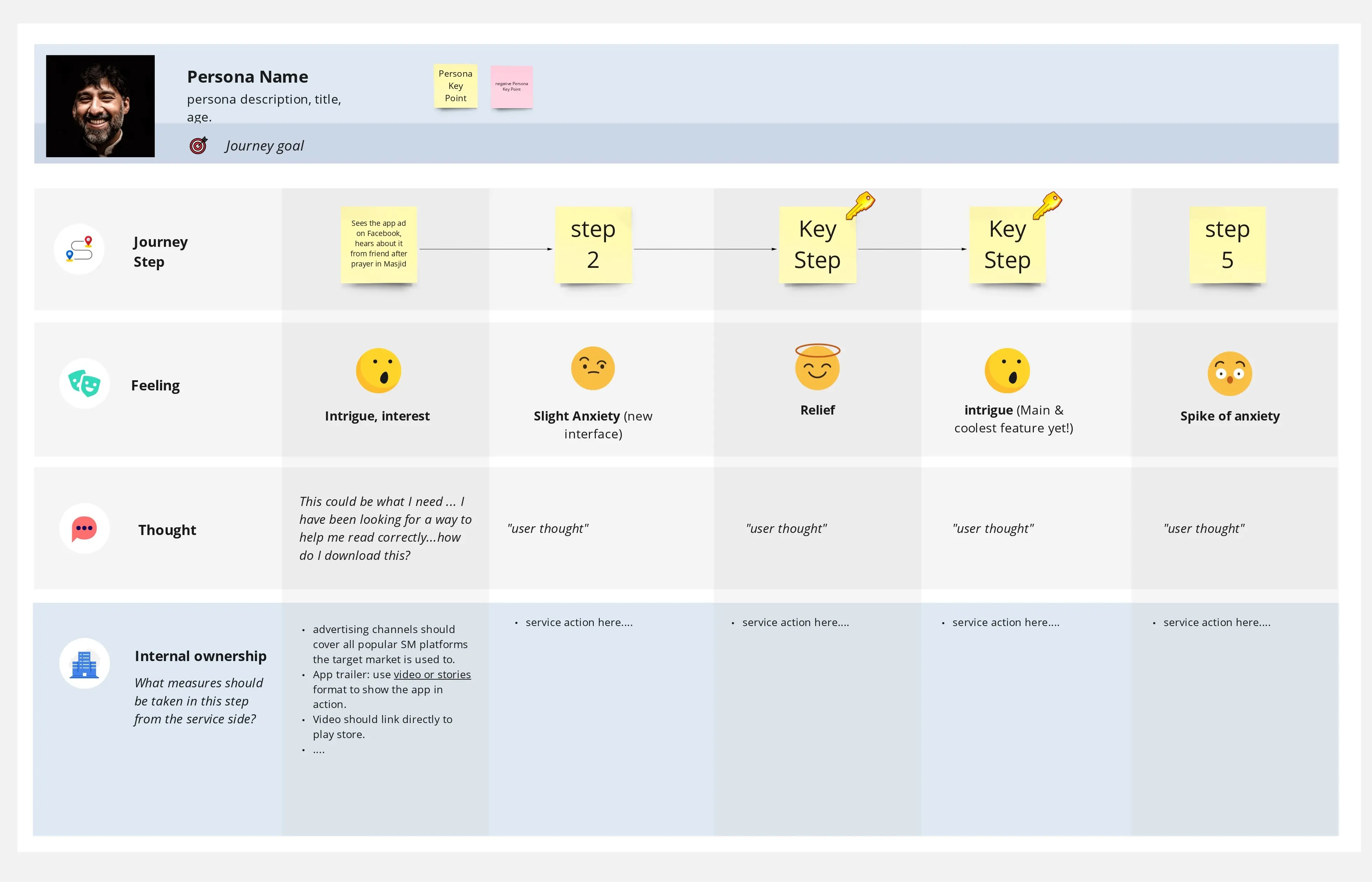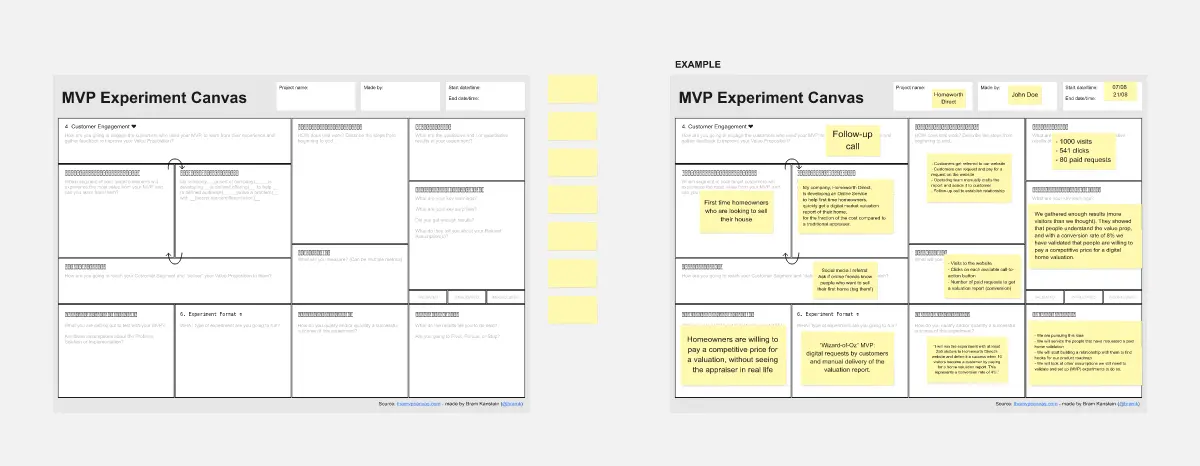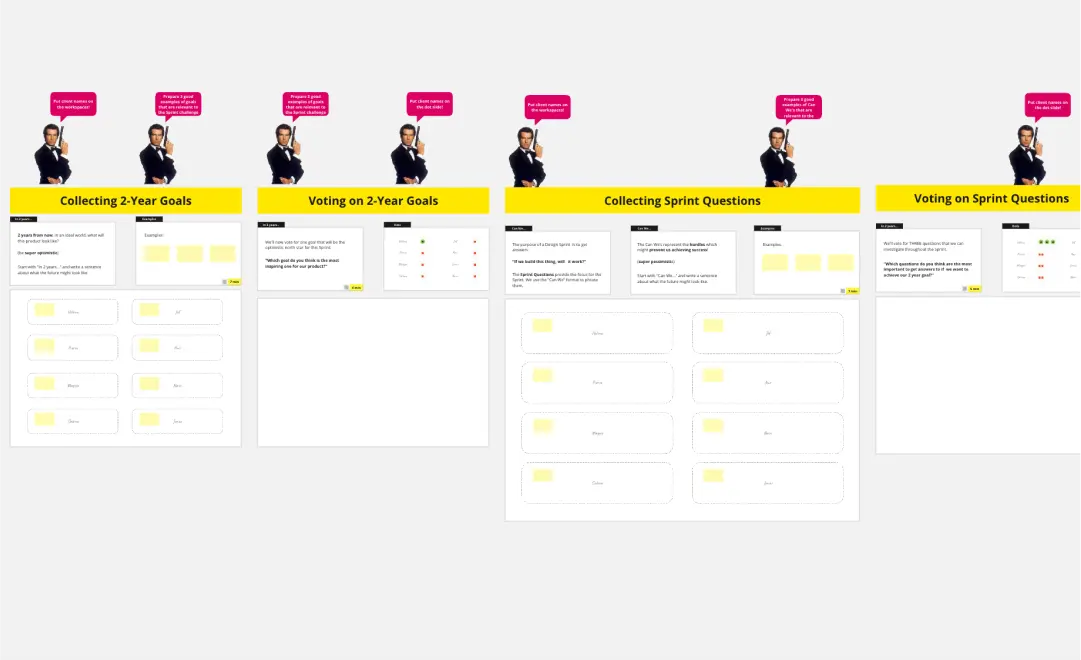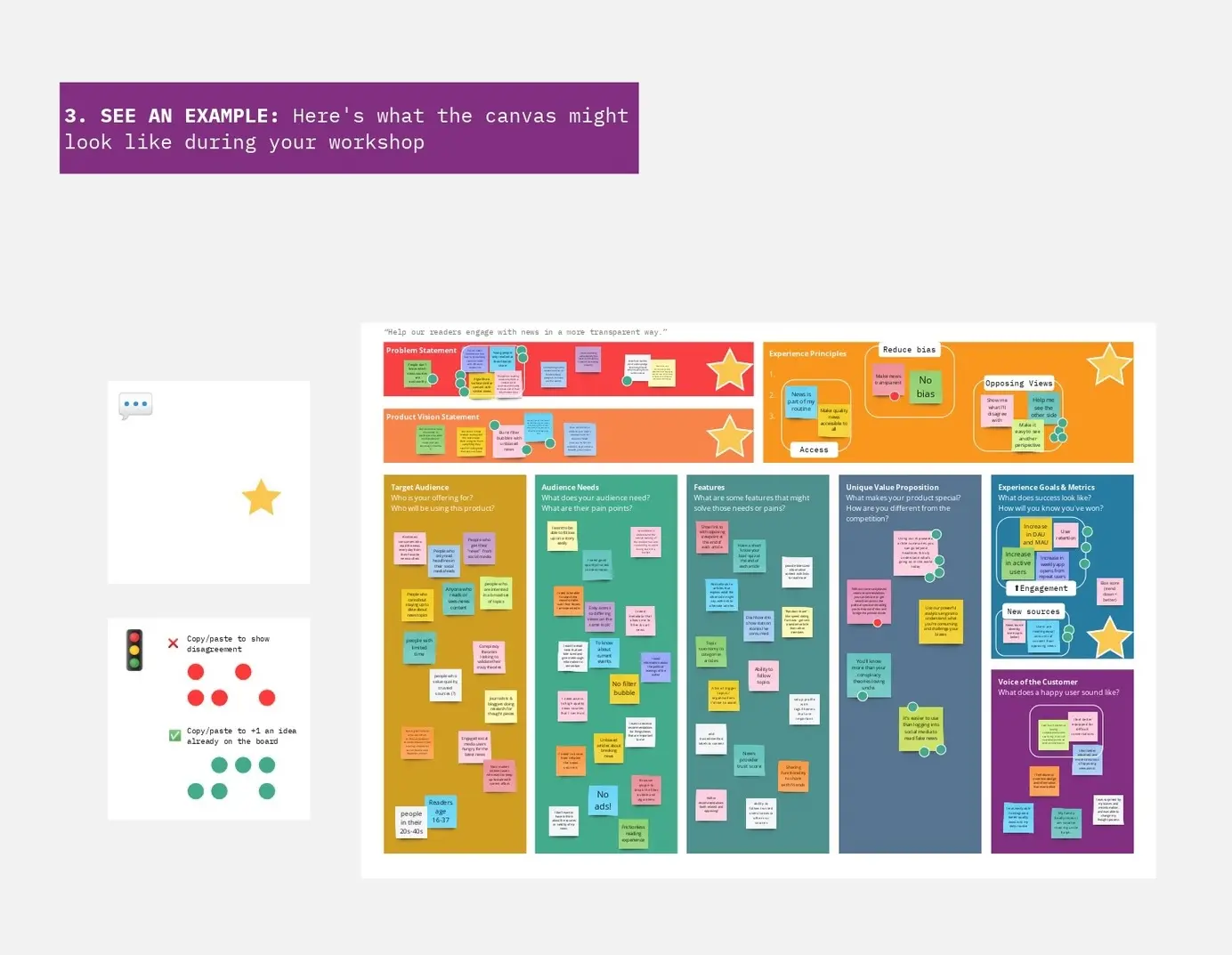All templates
Experience Map

Josh Zak
Product Strategist & Co-founder
Josh works with clients to identify opportunities for growth through high-value digital solutions. For just shy of a decade, Josh has been designing world-class experiences for leading tech companies. His focus is on UX strategy that adds long term value to our clients' products.
Categories
Similar templates
Customer Journey Map
427 likes
3.7K uses

The MVP Experiment Canvas
756 likes
6.8K uses

AJ&Smart's Remote Design Sprint
848 likes
11K uses

Product Vision Canvas
973 likes
6K uses

Product Vision Board
0 likes
3 uses

Ecosystem Map
53 likes
500 uses

Customer Journey Map
427 likes
3.7K uses

The MVP Experiment Canvas
756 likes
6.8K uses

AJ&Smart's Remote Design Sprint
848 likes
11K uses

Product Vision Canvas
973 likes
6K uses

Product Vision Board
0 likes
3 uses

Ecosystem Map
53 likes
500 uses
